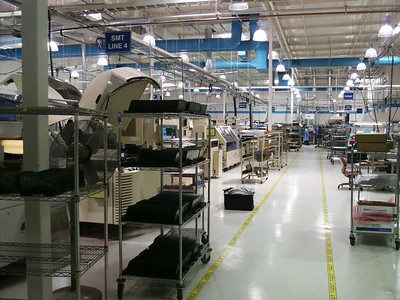Stacker recently analyzed employment data collected by the Bureau of Labor Statistics that compared the relative pain of worker shortages in all 50 states. Michigan fared surprisingly well. According to the numbers there are 91 unemployed workers for every 100 open jobs in the state.
North Dakota should be so lucky. The Peace Garden State only has 35 unemployed workers for every 100 open jobs. That earns it the top spot on Stacker’s list. Other states feeling the pinch of a lean workforce were South Dakota, Vermont, Maryland, Virginia, Mississippi, New Hampshire, Maine, Wyoming, and Montana.
This is one of those cases where the numbers on paper don’t line up with the situation on the ground, though. Open jobs frequently remain open because there are either no qualified workers to fill them, or the jobs pay so little that no one wants them. Currently, Michigan has about 21,000 more open positions than workers, and the state could achieve “full employment” if employers could find workers to fill these jobs. The’s unemployment rate is currently 4.1%.
In theory, there are two ways to address worker shortages among jobs that no one wants. Competition for workers and technological advances should take care of those positions that pay so little that no one wants them. In other words, market competition will pressure low-wage employers to raise their wages. Additionally, they could turn to technology to fill functions that workers will not. (e.g., the kiosks at McDonalds and Taco Bell’s automated ordering system.) That leaves the positions that remain unfilled for lack of appropriately qualified workers.
Worker shortages identify opportunities for community colleges
Worker shortages in these positions and industries should be where community colleges look for opportunities to help fill in the gaps. According to BLS data for the month of August, certain sectors had more job openings than hires, and more separations than hires. That means these sectors have demand for workers, but more workers are leaving than are coming in.
Manufacturing of durable goods is one of those sectors. Job openings and new hiring did not keep pace with the number of separations. Information services is another example of a sector with chronic worker shortages that would grow if there were more trained workers.
If community colleges (including Washtenaw) focused on preparing students for high-wage, high-demand jobs, Michigan’s employers could potentially fill many of the 21,000 jobs that are currently open with limited prospects for filling them. Even if community colleges could find ways to cut the worker shortages in half, that would make a huge difference in Michigan’s unemployment rate.
Photo Credit: Steve , via Flickr
















